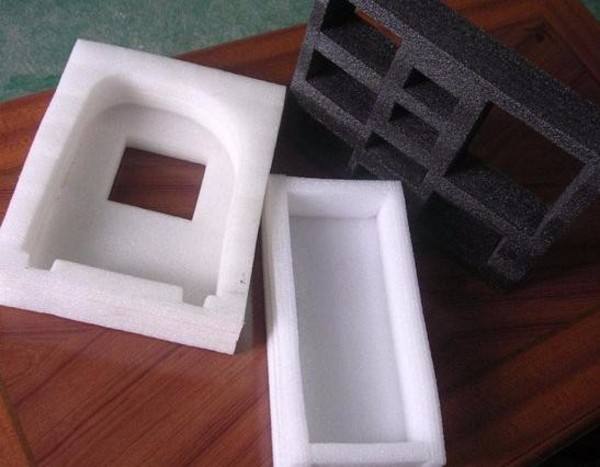What are the classifications and uses of packaging materials in Jiangmen
Packaging materials play a very important role in the materials industry. The packaging industry value of developed countries now accounts for more than 2% of the gross domestic product (GDP). Nowadays, our country also consumes a lot of product packaging every year. In recent years, with the improvement of people's living standards, especially the increasing emphasis on environmental protection, there has been a higher demand for packaging. The call for green packaging is growing, which has promoted the rapid development of materials science in the direction of packaging materials. As the foundation industry of packaging work, it has also driven the takeoff of packaging work.
According to the traditional material classification method, packaging materials can be divided into: paper materials, polymer materials, metal materials, glass and ceramic materials, composite materials, fiber materials, wood, and other materials. But with the development of materials science, especially the continuous emergence of new materials, packaging materials have presented the concept of functional materials. According to the concept of functional packaging materials, functional packaging materials include: edible packaging materials, differentiated packaging materials, fresh-keeping packaging materials, selected absorbent packaging materials, insulating packaging materials, heat-resistant packaging materials, conductive packaging materials, and packaging materials.
With the continuous application of high technology in the field of food packaging, various edible packaging materials have emerged one after another. These edible packaging materials are generally based on natural edible substances that the human body can absorb and digest, such as proteins, starch, polysaccharides, plant fibers, and other natural substances. Through the interaction between different molecules, they are made into packaging films with porous network structures that do not affect the flavor of food. Edible films are rich in materials, can be used, and have certain strength and other characteristics. As a functional material for packaging work, they have achieved rapid development in recent years and are widely used in food and pharmaceutical packaging.

As a packaging film, edible packaging film has the following characteristics: water resistance, which can delay the migration and diffusion of water, oil, and other components in food; Selective breathability and impermeability to prevent the transpiration of flavor compounds in food; Has good physical and mechanical functions, good external mechanical strength, and is easy to process and shape; Can be used as a carrier for food color, aroma, taste, nutrient enhancement, antioxidant substances and other additives; It has excellent characteristics such as being edible and environmentally friendly.
Nowadays, in terms of materials, edible packaging materials include protein, starch, chitin, and other natural materials.
Using protein to make edible packaging materials, divided into animal protein and plant protein. Animal protein is derived from animal skin, bone, cartilage tissue, etc. This type of material has excellent strength properties, water resistance, and oxygen permeability, making it suitable for packaging meat products. For example, an edible packaging film made from animal protein adhesive material has high strength, water resistance, and the function of isolating water vapor. When frozen and cooked, it will actively melt and can be used for packaging oily food without altering the flavor of the food.
Edible packaging film made from plant protein has excellent moisture resistance and certain functions. Suitable for packaging fatty foods, it can retain moisture and ensure the original flavor of the food remains unchanged. Nowadays, there are edible packaging films for soy protein, protein, fatty acids, starch, water-resistant protein, corn alcohol protein, protein coated packaging paper, etc. In addition, there are some alternative edible packaging films, such as milk protein, casein, etc.
Using protein extracted from soybeans to produce plastic like substances as edible packaging materials, replacing plastics previously composed of petroleum. This production technique involves soaking soybeans, separating ink into proteins, simply drying the proteins to remove any moisture, and then mixing protein powder with other ingredients and additives to create edible packaging films or coatings for food packaging. These films may have strength and elasticity.
Article source: Jiangmen Packaging Materialshttp://www.jmhuiyu.com/
-
11-07
Jiangmen Packaging Materials: How to Choose Buffer Packaging Materials
There are many kinds of cushioning packaging materials on the market, mainly including inflatable bags, pearl cotton, foam boards, bubble films, etc., which are commonly used to package various produc
-
11-07
Jiangmen Packaging Equipment: What are the Common Packaging Materials
1. Single powder (white card)1. Commonly used paper box materials, with paper thicknesses ranging from 80g to 400g, and higher thicknesses requiring two sheets to be laminated.2. The paper has a gloss
-
11-06
The development trend of Jiangmen's back-end packaging assembly line
Due to the relatively late start of China's packaging machinery industry and the lack of good processing skills and supporting professional support, it has always followed the method of imitating adva
-
11-05
Jiangmen Packaging Equipment: What should I do if the automatic sealing machine gets stuck?
What should I do if the automatic sealing machine encounters a card box?Firstly, it may be due to the small adjustment of the width or height of the sealing machine, as the machine manually adjusts th
